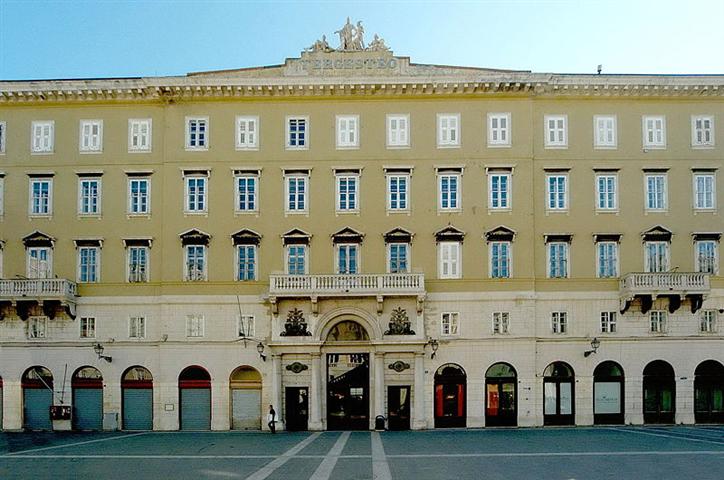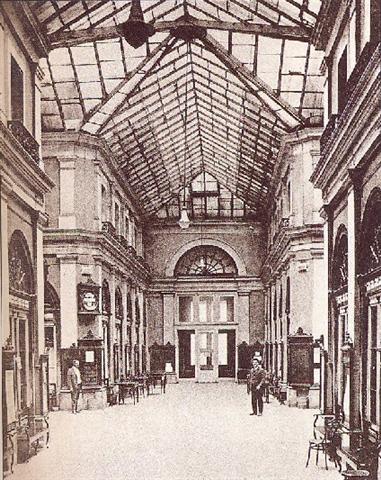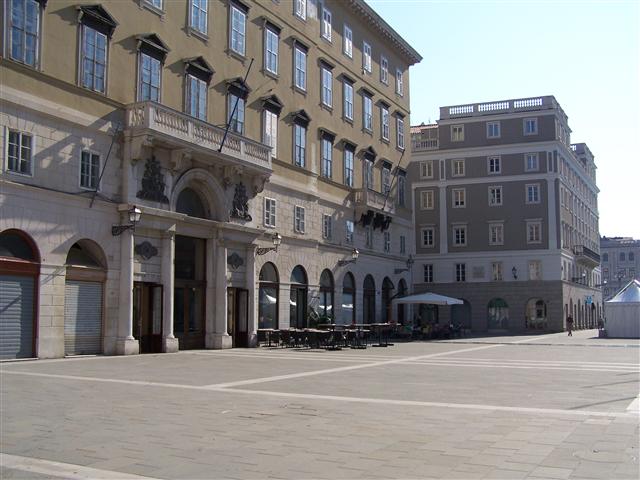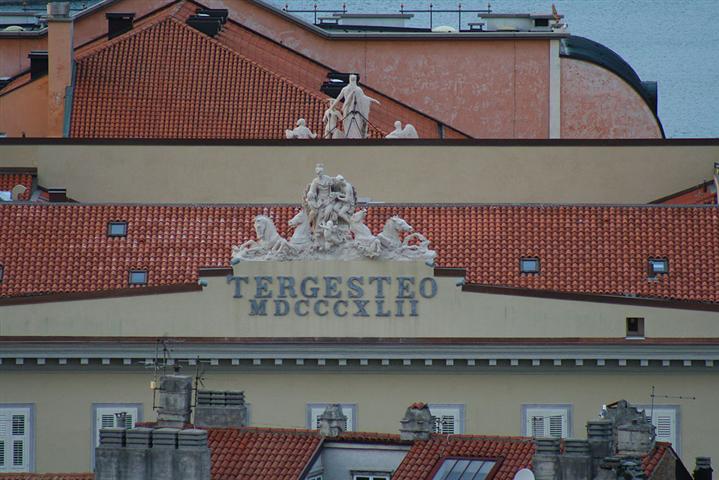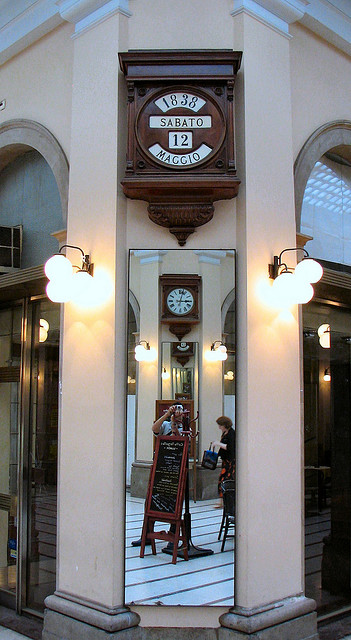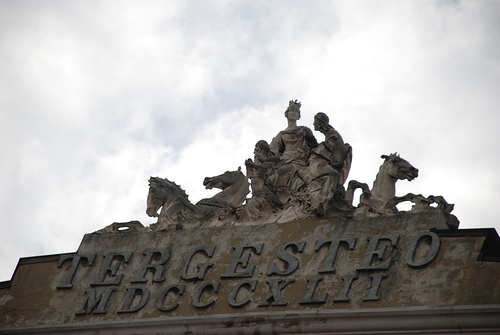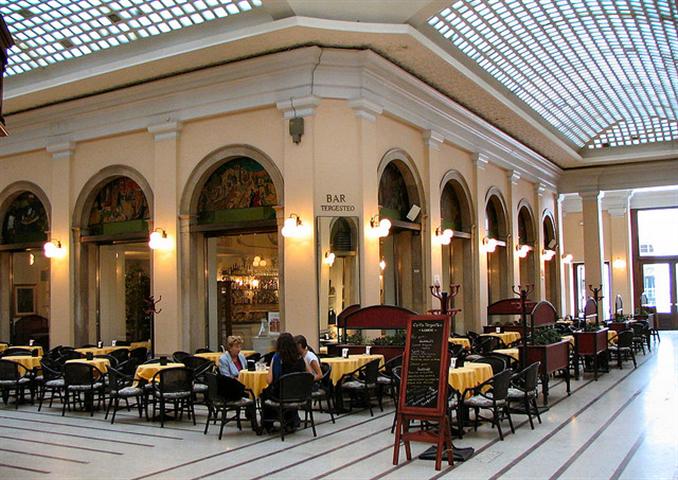Tergesteo (1840 - 1842)
piazza della Borsa
Arch. Francesco Bruyn
The Tergesteo was built between 1840 and 1842 - by the architect and engineer Francesco Bruyn - who skillfully combined the two previous projects of Antonio Buttazzoni (external facades of the building and plan) and Andrea Pizzala (internal gallery). For Trieste, the Tergesteo represents one of the last civil works of neoclassical style: the advancing eclecticism was about to prevail.
The building straddles public and private construction since, although born on the initiative of a shareholder company - the "Società del Tergesteo" - it arose to serve as a suitable place for trade and as a meeting point for the population. It is no coincidence that it is placed next to the Theater and the Stock Exchange, the most representative buildings of the city's economic and cultural life, towards which it stands almost as a meeting point. The cross-shaped structure of the internal gallery, once open on all four sides, accentuates its character as an urban knot, almost proposing, in a modern building, the function of road junctions, Roman holes, sometimes covered, at which the public life of the ancients took place.
However, only one year after its opening in 1842, the client company rented the entire ground floor to the "Traders' Company" which, in addition to holding its own meetings, since 1844 moved there; the headquarters of the stock exchange. From 1842 to 1883 the Tergesteo was the seat of the Austrian Lloyd, from whose printing house, which was based in the mezzanine, important publications came out, including the "Favilla" and the "Osservatore Triestino".
During the Second World War, the gallery was requisitioned and used as a warehouse: the situation of the building worsened and will be resolved only in 1957, with the restoration carried out by the architect Alessandro Psacaropulo. On this occasion the ancient pitched roof was replaced, lowering it and obtaining a greater balance of proportions, and the wall surfaces were restored.




